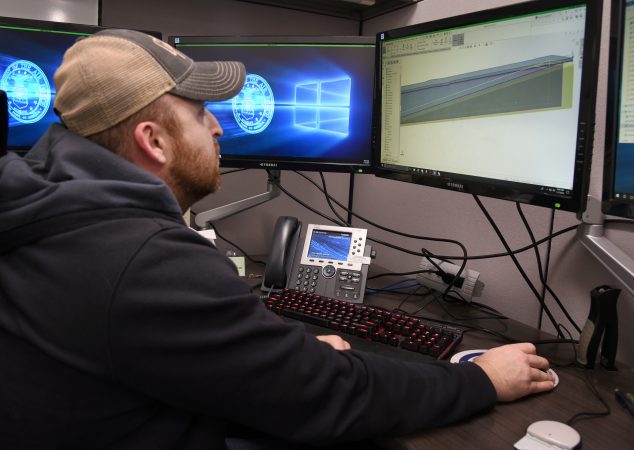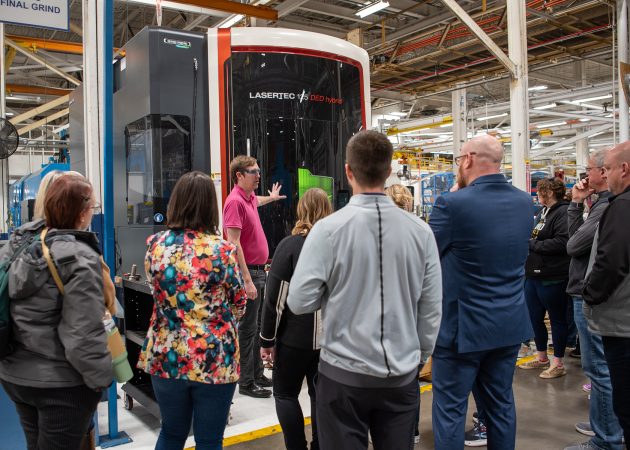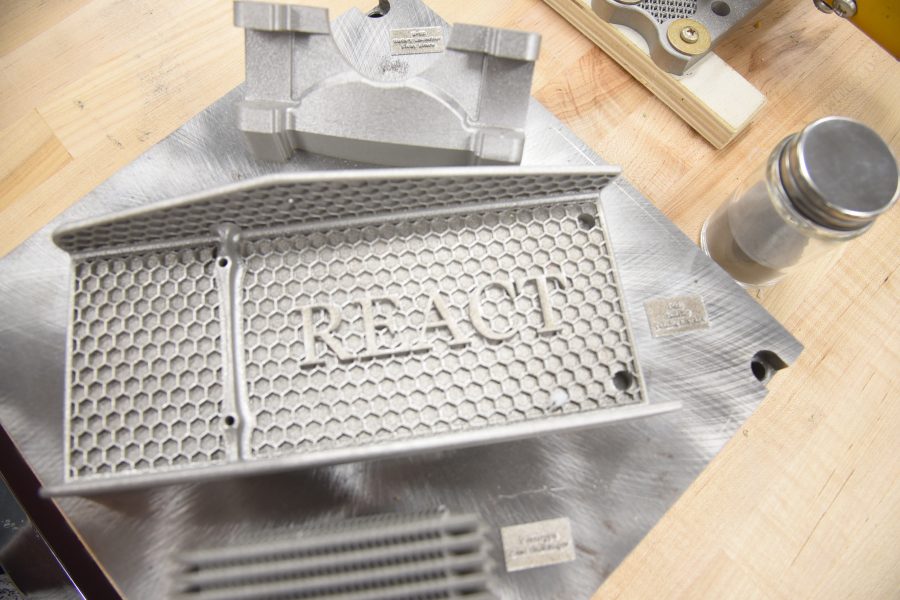TINKER AIR FORCE BASE, Okla.—Air Force leaders and industry officials have long extolled the benefits of additive manufacturing, promising a future where maintainers use 3D printing technology to manufacture replacement parts faster than they can be shipped across the world.
Now, a small group of engineers, technicians, and machinists here are moving that additive manufacturing technology out of the future and into the present.
It’s “not because we’re just saying, ‘Hey, this has potential in the future,’” Oklahoma City Air Logistics Center technical director Eric Bartlow told Air & Space Forces Magazine during an August visit. “We grow with our customer need in that area. And so is it bleeding edge? We’ve been doing 3D-printing since the ’70s. I think the rest of the world is kind of catching up, and you’ll continue to see that scale.”
Across more than 8 million square feet of industrial floor and office space, more than 9,000 personnel work at the OC-ALC, where welding and wrench-turning are still the norm. But an increasing number of programs—collectively dubbed an “innovation ecosystem”—are now applying these techniques to breathe new life into aging aircraft.
“We use the term ‘tired iron’ a lot out here,” said Clay Jordan, chief engineer for a program called PROACT. “We have some really old ‘tired iron’ that we are trying to bring back to life.”
Coming into Its Own
Brig. Gen. Brian R. Moore, commander of the OC-ALC, says this shift is the result of years of work.
“Mr. Bartlow and the team have been thinking about digital transformation and what that means for an industrial complex, probably before I came over in 2018 and 2019,” Moore said. “But really you can see the manifestation of it in the last six years.”
Case in point: The Reverse Engineering and Critical Tooling (REACT) program, which started several years ago to produce parts that aren’t commercially available anymore. REACT started small but now comprises a team of 50 that has become the Air Force Center of Excellence for advanced manufacturing.
REACT offices display examples of that transformation: Scanners that map and model the shapes of products ranging from small parts to entire aircraft; digital design tools used to process and refine scans; and more than a dozen additive production systems, high-end 3D printers that can “print” using materials ranging from resin to cobalt chrome.

The B-1 bomber is among REACT’s greatest success stories. A plastic panel in the crew compartment might have taken five years to replace using conventional contracting processes; REACT reverse- engineered the panel produced test products, and now produces replacements for the entire fleet, said flight chief Kyle Taylor. Now REACT is now producing other parts for the BONE cockpit, replacing honeycomb composite materials that degraded over time.
“They’ve leaned forward a lot with additive,” Taylor said of the B-1 program office. “And because of that, they’ve kind of pulled the whole Air Force along with them. Others [system program offices] come over here and they see all these B-1 panels that we’re printing, and they say, ‘Oh, we have little switches and knobs and things, and we haven’t really implemented additive as much as B-1 has.’ So because B-1 has kind of led the way, other weapon systems can get the benefits of the testing they’ve done, and the approval processes they’ve gone through.”
The results are stark: 12,000 parts in back orders.
REACT’s bank of polymer 3D printers are “just churning out parts consistently,” said Taylor, operating at a continuous, dull whine.
Said Moore: “Every jet that comes to Tinker for depot maintenance is getting around 200 polymer parts put on it.”
Going Upscale
Additive repair is another area of emphasis: PROACT, the Process, Repair, Operations, and Critical Tooling program, employs 40 specialists for engine repair.
“We’ve been doing additive for repair for decades now, through things like thermal spray and weld repairs, where you build up material on wear surfaces,” said Blake Grimwood, the engineering section chief for PROACT. “We’re just using the newer technologies that people think of as additive manufacturing, as opposed to the legacy ones.”
One new technology is directed energy deposition, in which a laser melts a metal or metal powder and deposits the material onto a surface for precise welding, and cold spray, in which metal powder is applied without heat.
“We’re able to look at the problem and say, ‘this is the wear condition we’re seeing, these are the types of repairs we do for this wear condition. OK, what’s the right approach?’ And if we can’t figure out a right approach, then that gives us an opportunity to say, ‘Let’s go find a new technology to solve this,’” he said.

The goal, he added, is not just to find the most advanced possible tech, but rather the most sustainable and useful over time.
“Just because we develop a new repair doesn’t mean we don’t have the old repair as well, if that’s needed for capacity,” he noted. “But a lot of these repairs are faster and more consistent, so we can fit more into a timeframe if needed.” PROACT also has a team of tool designers who create tooling needed to facilitate each particular repair.
REACT is also expanding into metal 3D printing and is even casting its own parts—a necessity in an era when commercial sourcing for small volumes of unique products is prohibitive or even impossible.
“Right now, we can pour 120 pounds of aluminum. So what we can do is take our knowledge in reverse engineering and modeling, you can bring us a part, we reverse engineer the whole thing,” Taylor said. “We’ll come up with three or four different designs that we think will work, print all of them, pour all the hot metal into them and see which one came out best. We can work with the materials lab here on base. We can give them parts. They can chop up all the parts and say, this one has the lowest porosity, this is your best pour. And then we can just 3D print however many molds we need.”
Hurdles
REACT and PROACT leaders say excitement over additive manufacturing does not make it the right solution for every need. “We have an additive expert … and I joke that about half of his job is saying no to additive parts,” Taylor said. “Sometimes it’s going to take you longer, it’s going to be more expensive. Additive is just another tool in your toolbox,” not the answer for every problem.
Bureaucratic hurdles are another issue. Approval processes and procedures haven’t all caught up to new manufacturing methods. “Airworthiness certification right now is definitely a challenge the whole Air Force is seeing,” said Taylor. “Leadership knows that’s a barrier we have.”
Standardizing new “inspection criteria on those metal parts, think about them in terms of risk and safety factors” is still a work in process. The Air Force, Moore said, needs “to be able to close that gap and bring the future faster.”
In some cases, new repair technology not only meets an existing specification, Taylor said, but it can also be a better solution for the long-term integrity of the part. “For instance, if I could weld repair something in the past with the gold gas tungsten arc welding, I can also do the [directed energy deposition] repair, but now I’m putting less heat, I’m not warping parts.”
Each new advance opens up new possibilities, experts say. Just having the tools in place opens the aperture on future applications.
“We’ve got the stuff,” Barlow said. “More importantly, we’ve got the people. We have the intellectual capability to do anything. If a human can think it through, we can do it.”


